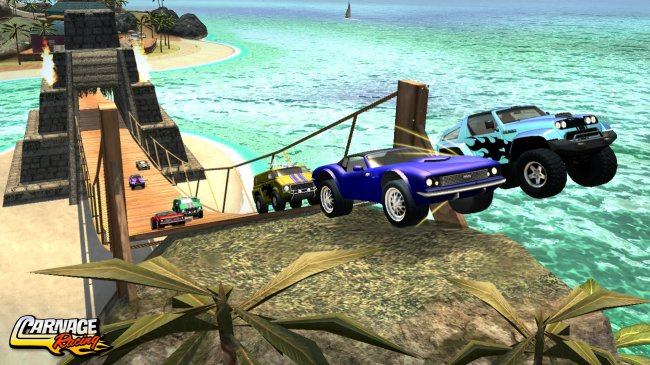



Sniper Elite 3 launched last week and shot straight to the top of the UK sales charts. A strong opening weekend, especially considering 65 per cent of sales were on next-gen consoles, it also pipped some strong contenders to the top spot.
It's cause for celebration for 505 and Rebellion then, even if scoring a number one these days doesn't require the sheer amount of sales it once did. No matter: Sniper Elite's chart position also shows that so called 'double A' games can find an audience, given the right circumstances.
For a long time, it’s been a doom-and-gloom story for middle-of-the-pack development teams. We’ve seen many studios and publishers close, most notable being the demise of THQ, a process which is still ongoing.
Acclaim also succumbed to a similar fate, although bowed out of the business with far less grace. (Acclaim offered $10,000 to any parents willing to name their baby ‘Turok’ in the lead-up to the launch of Turok: Evolution, and sought advertising space on people’s actual tombstones, laughing the latter off as “April fools!” (via CNN)
But 505 Games and the Sniper Elite series show that, with the right framework, branding, and buzz, mid-tier games can continue to be successful in a climate that seems to be dominated by a contrast of Hollywood-esque budgets and smaller indie titles.
Like most things in life, timing is everything. Sniper Elite 3 has launched at the tail-end of the first half of the year, which often represents the early part of the ‘gaming drought’. This period is often when gamers desperately peruse the aisles looking for a forgotten gem, or browse their libraries hoping to complete those games they started and promised to return to in a couple of days, three months ago.

Sniper Elite represents something new, yet familiar. Players know what the series is about: despite being a new entry, the franchise is a one-trick pony, all about gruesome kill shots delivered in full, X-ray glory. Our review details as much, but again, in a drought, people will gulp the slightest drop of water.
This isn’t to say Sniper Elite 3 is a bad game; it merely highlights the importance of timing the launch of a product. Had it debuted but a couple of months earlier, Sniper Elite would have been buried among the Titanfalls and Watch Dogs of this world. Any later and people will be prepping for the next wave of big-budget releases in the lead up to the holidays.
Sniper Elite V2 launched in a slightly more competitive window, on May 4 2012 in Europe, with games like Diablo 3, Minecraft (XBLA) and Max Payne 3 also launching that month. But in terms of direct competition, there remained no contenders, giving 505 a free run at all those sniping-starved gamers, front of the queue being Charlie Brooker, who stars in Sniper Elite 3 as a Nazi.
For mid-tier games to continue to find their audience, they need to launch at a time when they won’t be swamped by the big-hitters: without the marketing budget, name recognition, or freedom of the shelves, potential customers can very easily take their time (and money) elsewhere.
Another thing that helps keeps games like Sniper Elite 3 viable is its budget. Though figures are never released, it’s fair to say that Rebellion and 505 didn’t spend Call of Duty-money to make this game, which means that sales numbers don’t have to be astronomical for it to be a success.

This is what led to the fall of THQ: the company spent millions on its games, both on the development and marketing front, with FPS pretender Homefront being a key example. Despite shipping 2.6 million copies of that game as of May 2011, the company still lost $136.1 million in the financial year (via GameSpot). A tacit understanding of your game, your audience and your potential market is vital in order to maintain viability as a company, and Rebellion seem to be doing so with Sniper Elite.
Of course, the one factor that no business can account for, and yet is as vital as any amount of money one can throw at a project, is luck. Products need just a little bit of luck to go along with all the effort and investment to make a product a success. Sadly, you can’t include luck in a business plan, but teams can put themselves in a position to be lucky. The correct launch window and staying true to your audience and core concepts is the best bet for this to happen.



